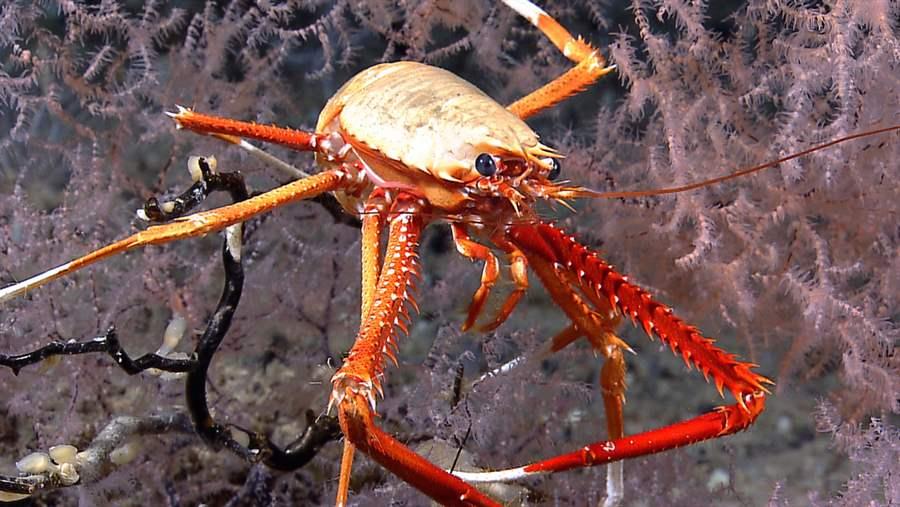Corals Up Close: An Ancient Creature Holds Clues to Ocean’s Past
Black coral, which can live thousands of years, faces threats in the Gulf of Mexico

A bush-shaped black coral in the Gulf of Mexico. These animals are named after their black skeletons, which have been used in jewelry.
© National Oceanic and Atmospheric AdministrationDeep-water corals, which grow in the cold, dark depths of all the world’s seas, can live hundreds or even thousands of years. This is the second in The Pew Charitable Trusts’ Corals Up Close series. We urge readers to submit comments to the Gulf of Mexico Fishery Management Council in favor of protecting these ancient animals.
The lost city of Pompeii was still thriving when some black corals in the Gulf of Mexico began life.
This type of deep-sea coral is one of the world’s oldest living marine creatures. Scientists have identified a specimen in Hawaii that is more than 4,000 years old.
Black corals also carry clues to history, for example in the rings they grow—similar to those in trees—which have chemical signatures that help scientists decipher ocean conditions over time.

Scientists estimate that this Leiopathes black coral colony, growing at a depth of nearly 1,300 feet in the Gulf of Mexico off western Florida, is 400 to 1,000 years old.
© National Oceanic and Atmospheric AdministrationBlack corals take their name from the black or dark brown of their skeletons, though their living tissue varies from white to red, green, yellow, or brown. They grow in different shapes ranging from single stalks to small bushes. Black corals provide excellent habitat for a variety of marine life.

A squat lobster with brilliant orange legs rests on a bush-shaped black coral in the northern Gulf of Mexico.
© National Oceanic and Atmospheric AdministrationThese ancient corals in the Gulf of Mexico face modern threats, mainly from fishing gear such as trawls, traps, longlines, and anchors, but also from energy development and changing ocean conditions. Gulf fishery managers are considering a proposal to safeguard coral hot spots by restricting the use of such gear in up to 23 sites that scientists deem high priorities for protection.
Conserving deep-water corals protects marine habitat that is critical to keeping our oceans healthy. To learn more, watch the Pew video and sign our action alert.
Holly Binns directs The Pew Charitable Trusts’ efforts to protect ocean life in the Gulf of Mexico, the U.S. South Atlantic Ocean, and the U.S. Caribbean.


This video is hosted by YouTube. In order to view it, you must consent to the use of “Marketing Cookies” by updating your preferences in the Cookie Settings link below. View on YouTube
This video is hosted by YouTube. In order to view it, you must consent to the use of “Marketing Cookies” by updating your preferences in the Cookie Settings link below. View on YouTube


Ancient Corals Need Protection From Modern Threats
Deep-sea communities face risks from industrial activity, fishing, and ocean warming and acidification
Learn More






